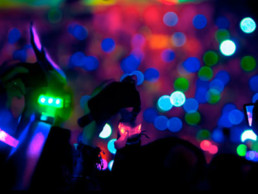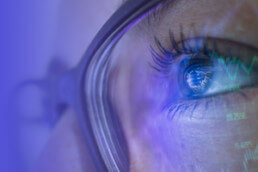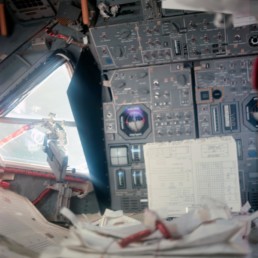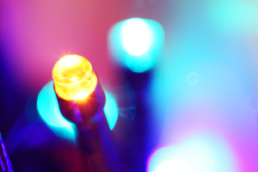LEDs Light Up the Night with a Flick of a Wrist!
If you have attended a concert or festival, you may have experienced the use of lighted wristbands synchronized to the rhythm of the music.
Jason Regler, the owner of Xylobands, developed these creative bands when he was intrigued by the unique musical style of the popular band ‘Coldplay’. This spark of combining knowledge and passion for their music triggered the idea for these innovative bracelets.
Inspired by the lyrics, “Lights will guide you home” from Coldplay’s song “Fix You,” Regler dreamed of a show where the lights were the guiding force behind the music. After much deliberation and trial and error, Regler was able to develop illuminating bracelets that glowed in time to the beat of the music. Using LED lights, the RFID-driven wristbands relied on a receiver to intake data that indicates how and when to flash-based on specific codes programmed. Each wristband sends and receives radio waves through proprietary software loaded onto a laptop and transferred to a transmitter box/antenna. The codes are sent through radio frequencies with each transmitter ranging up to 400 meters. Other companies, like RippleLight and Glow Motion Technologies, are also embracing this wireless LED technology to change the way people interact and experience various musical events. The company, PixMob, provides battery-operated LED bands that include a motion sensor. The LEDs are then controlled by an infrared signal from a group of transmitters, directed from a central control system giving the stage lighting crew direct control of the wristbands being worn by those attending the venue.
Similar tours, including Taylor Swift and a weekly show by DJ Tiesto at Las Vegas at the Hakkasan nightclub at the MGM Grand Hotel and Casino, have also used this interactive technology. Attendees at the Jingle Bell Ball concert, held in December 2021 were also able to experience this unique experience.
How does it work? The thick fabric of the bracelets is printed with a logo of choice and can then be controlled remotely by a tablet, or PC, by the stage crew. The wristbands contain LED lights that emit the colors the designer wishes to use. The measurement and development of these LED lights within the wristbands require the lumens, color temperature, and LED voltage to be categorized or binned. LED binning is the technique manufacturers use to classify LEDs. There are spectrometers designed to assist in LED binning. The use of high-quality tools such as spectroradiometers and the detailed understanding of the accuracy and precision needed to develop this technology is extremely important in LED production. It is crucial to have the correct instruments as they provide the catalysts for precise binning within very tight photometric and colorimetric boundaries.
Konica Minolta Sensing’s counterpart, Instrument Systems offers instruments to help with high-precision LED color binning, including the highly recognized reference instrument for spectral measurement: Instrument Systems’ CAS 140D. This high-end array spectrometer is internationally recognized as a calibration reference tool for spectoradiometric and photometric measurements. Precise measurement of the smallest deviations ensures accurate binning of LEDs. Additional spectrometers within the CAS series, offer high-precision optical measurements performed in only a few milliseconds. Instrument Systems provides a broad portfolio of instruments capable of measuring LED and display measurement. This portfolio includes measurement adapters and accessories for a wide range of measurement tasks with varied demands.
Instrument Systems and Konica Minolta Sensing together have been cooperating for many years with major LED manufacturers and their integrators resulting in a base of several thousand LED test systems installed worldwide. To learn more about our full range of lighting measurement instruments available, visit our lighting industry page and see how Konica Minolta and Instrument Systems provides solutions from research and development, design, production, quality control, installation, and field verification.










